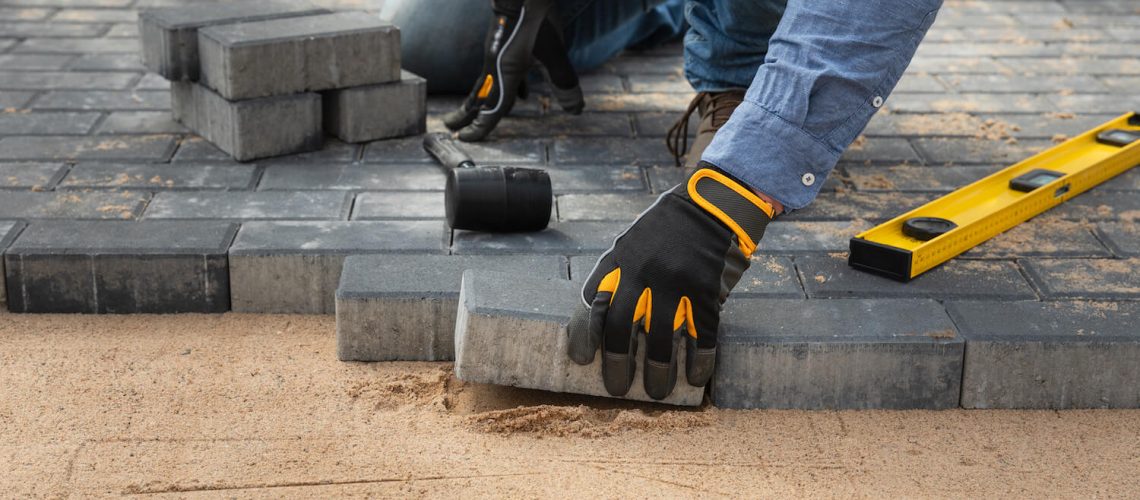Brick pavers are an excellent choice for enhancing the aesthetic appeal and functionality of outdoor spaces. Whether you’re considering a patio, driveway, walkway, or any other landscaping project, understanding how to estimate the cost of brick pavers is crucial for effective budgeting.
In this comprehensive guide, we will break down the various factors influencing the cost of brick paver projects, providing homeowners with valuable insights and tips to ensure a successful and cost-effective endeavor.
Understanding the Brick Paver Basics
Before delving into the estimation process, it’s essential to have a basic understanding of brick pavers. These are durable, versatile materials commonly used for outdoor flooring. They come in various shapes, sizes, and colors, allowing for endless design possibilities. The most common types of brick pavers include clay, concrete, and natural stone, each with its unique characteristics and price points.
Factors Influencing the Project Cost
- Material Choice: The type of brick paver you choose significantly impacts the overall cost of your project. Clay pavers, known for their rich color and durability, tend to be more expensive than concrete pavers. Natural stone pavers, such as granite or limestone, are at the higher end of the price spectrum. Consider your budget and aesthetic preferences when selecting the material.
- Project Size and Complexity: The size and complexity of your project directly affect the amount of materials needed and, consequently, the overall cost. Larger projects with intricate designs or irregular shapes may require more labor and time, contributing to higher expenses. Keep in mind that intricate patterns and curved edges may increase both material and labor costs.
- Site Preparation: The condition of the area where you plan to install the brick pavers can significantly impact costs. If the site requires extensive excavation, grading, or the removal of existing structures, the preparation work will add to the overall expense. Ensure the site is properly prepared to create a stable base for the pavers, which is essential for their longevity.
- Labor Costs: Labor costs are a substantial part of any construction project. The complexity of the installation process, local labor rates, and the availability of skilled workers all influence labor expenses. Obtaining multiple quotes from reputable contractors will help you gauge the average labor costs in your area and make an informed decision.
- Geographic Location: The cost of materials and labor varies across different regions. Urban areas with higher living costs and demand for skilled labor may have higher overall project costs. Consider obtaining local estimates to get a more accurate picture of the expenses associated with your specific location.
Estimating Material Costs
- Calculating Square Footage: Measure the area where you plan to install the brick pavers and calculate the square footage. This involves multiplying the length by the width. For irregularly shaped areas, divide them into smaller sections and calculate each one individually, then add the totals.
- Selecting Paver Size and Pattern: The size and pattern of the brick pavers will impact the number needed. Smaller pavers may require more per square foot, while larger ones can cover more area with fewer units. Additionally, intricate patterns may require more cutting, increasing material waste and costs.
- Considering Waste and Cuts: It’s prudent to account for a percentage of waste due to cutting and breakage during installation. The amount of waste varies based on the complexity of the design and the skill of the installer. A common rule of thumb is to add 5-10% to the total material quantity to accommodate waste.
- Pricing per Square Foot: Once you have the total square footage and have selected the type and size of pavers, you can calculate the cost per square foot. Obtain quotes from local suppliers for the chosen paver type and multiply the price per unit by the number of units needed per square foot.
Estimating Project Labor Costs
- Obtaining Contractor Quotes: Reach out to several contractors in your area to obtain quotes for labor. Make sure each quote includes a breakdown of labor costs, such as excavation, base preparation, installation, and finishing. This will help you compare estimates and understand the services included in each.
- Considering Specialized Skills: Some projects may require specialized skills, especially if you opt for intricate designs or patterns. Contractors with advanced expertise may charge higher rates, but their skills can ensure a high-quality installation. Consider the complexity of your project and whether specialized skills are necessary.
- Inquiring about Preparation Costs: Site preparation is a crucial aspect of brick paver projects. Inquire about the costs associated with excavation, grading, and any necessary adjustments to the existing landscape. Proper preparation is essential for the longevity and stability of your paver installation.
Additional Considerations
- Edge Restraints and Borders: Factor in the cost of edge restraints and borders to ensure the stability and longevity of your brick paver installation. These elements help contain the pavers, preventing shifting and settling over time. The type and material of the edge restraints can impact costs.
- Sealants and Finishes: Applying sealants can enhance the appearance and durability of brick pavers. Consider the cost of sealants and finishes when estimating your project expenses. Some homeowners choose to apply sealants themselves, while others prefer hiring professionals for this task.
- Project Timeline: The duration of the project can affect costs. If you have a tight timeline or specific deadlines, some contractors may charge higher rates for expedited services. Plan your project well in advance to allow for flexibility in scheduling and potentially reduce labor costs.
- Permitting and Regulations: Check with local authorities to determine whether your project requires permits and if there are any specific regulations governing outdoor construction. Obtaining permits may involve additional costs, so be sure to include this in your overall budget.
Maintenance Costs
Beyond the initial installation, it’s essential to factor in maintenance costs when estimating the overall expenses of your brick paver project. While brick pavers are known for their durability, proper maintenance is crucial for preserving their appearance and functionality over time. Regular cleaning, resealing, and addressing any repairs promptly can contribute to the longevity of your investment. Consider the cost of maintenance products, such as sealants and cleaning solutions, and plan for occasional professional maintenance if needed.
Comparing Quotes and Negotiating
Obtaining quotes from multiple suppliers and contractors is a crucial step in the estimation process. This not only helps you understand the average costs in your area but also provides an opportunity to compare the services and materials offered by different providers. When reviewing quotes, pay attention to the details of what is included in each estimate, including materials, labor, preparation, and any additional services.
Consider negotiating with contractors to achieve a fair deal. Some contractors may be open to adjusting their prices or offering discounts, especially during off-peak seasons. However, be cautious not to compromise on the quality of materials or workmanship to save costs, as this could lead to issues down the line.
Contingency Planning
No matter how meticulously you plan, unforeseen circumstances can arise during a construction project. It’s wise to include a contingency fund in your budget to account for unexpected expenses. This fund can be crucial in addressing issues like unexpected soil conditions, weather-related delays, or changes in project scope. A contingency of 10-15% of the total project cost is a common recommendation, providing a financial buffer for any unforeseen challenges.
Understanding Payment Terms
Before committing to any contractor or supplier, ensure you understand the payment terms. Some may require a deposit upfront, while others may have milestone payments throughout the project. Be wary of contractors who demand full payment before starting the work. A reasonable payment schedule aligns payments with completed project phases, providing you with financial control and ensuring that the contractor remains motivated to deliver quality work.
Environmental Considerations
While estimating costs, consider the environmental impact of your project. Some regions have regulations regarding water runoff and permeability, which can influence the type of pavers and base materials required. Additionally, eco-friendly options, such as permeable pavers, allow water to penetrate the surface, reducing runoff and contributing to sustainable landscaping practices. While these options may have slightly higher upfront costs, they can offer long-term environmental and cost benefits.
Post-Installation Expenses
After the installation is complete, there may be additional expenses to consider. This could include landscaping around the newly paved area, adding outdoor furniture, or investing in lighting features. While these elements may not be directly related to the paver installation, they contribute to the overall ambiance and functionality of the space. Factor these post-installation expenses into your budget to create a comprehensive financial plan for your outdoor project.
Brick Paver Patio Conclusion
Estimating the cost of a brick paver project requires careful consideration of various factors, from material choices and labor costs to maintenance and post-installation expenses. By approaching the estimation process systematically, homeowners can develop a realistic budget and make informed decisions throughout the project. Whether you choose to embark on a DIY endeavor or hire professional contractors, the key is to prioritize quality and durability to ensure a long-lasting and visually appealing outdoor space. Remember that investing time and effort in accurate cost estimation can lead to a successful and satisfying brick paver project that enhances the beauty and functionality of your home.

